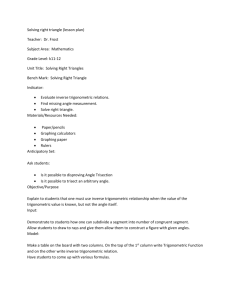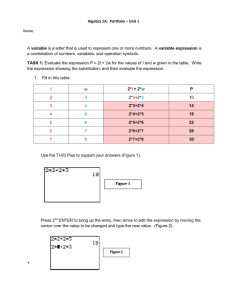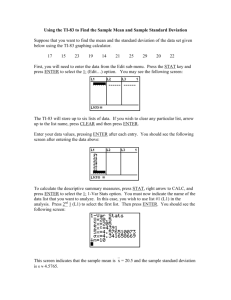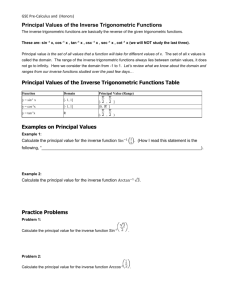Calculator Notes for the Texas Instruments TI-83 and TI
advertisement
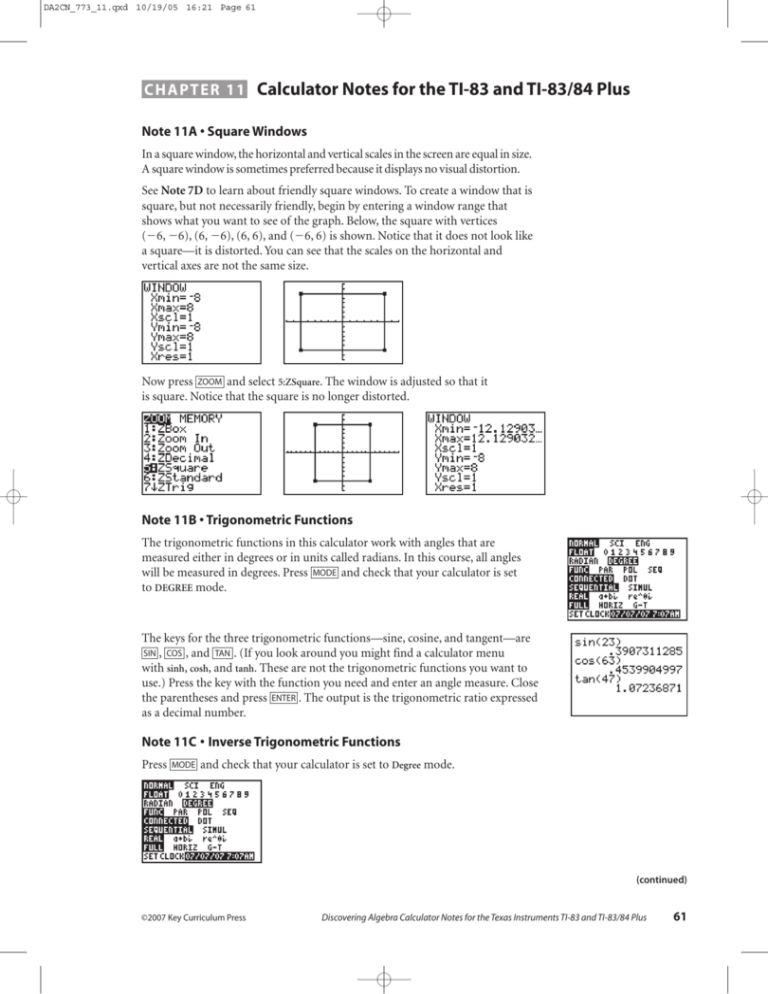
DA2CN_773_11.qxd 10/19/05 16:21 Page 61 CHAPTER 11 Calculator Notes for the TI-83 and TI-83/84 Plus Note 11A • Square Windows In a square window, the horizontal and vertical scales in the screen are equal in size. A square window is sometimes preferred because it displays no visual distortion. See Note 7D to learn about friendly square windows. To create a window that is square, but not necessarily friendly, begin by entering a window range that shows what you want to see of the graph. Below, the square with vertices (6, 6), (6, 6), (6, 6), and (6, 6) is shown. Notice that it does not look like a square—it is distorted. You can see that the scales on the horizontal and vertical axes are not the same size. Now press ZOOM and select 5:ZSquare. The window is adjusted so that it is square. Notice that the square is no longer distorted. Note 11B • Trigonometric Functions The trigonometric functions in this calculator work with angles that are measured either in degrees or in units called radians. In this course, all angles will be measured in degrees. Press MODE and check that your calculator is set to DEGREE mode. The keys for the three trigonometric functions—sine, cosine, and tangent—are SIN , COS , and TAN . (If you look around you might find a calculator menu with sinh, cosh, and tanh. These are not the trigonometric functions you want to use.) Press the key with the function you need and enter an angle measure. Close the parentheses and press ENTER . The output is the trigonometric ratio expressed as a decimal number. Note 11C • Inverse Trigonometric Functions Press MODE and check that your calculator is set to Degree mode. (continued) ©2007 Key Curriculum Press Discovering Algebra Calculator Notes for the Texas Instruments TI-83 and TI-83/84 Plus 61 DA2CN_773_11.qxd 10/19/05 16:21 Page 62 Note 11C • Inverse Trigonometric Functions (continued) TI-83 and TI-83/84 Plus To convert a trigonometric ratio back to an angle measure, use the inverse function found above the same key as the function. Press 2nd , select the inverse function, either [SIN1], [COS1], or [TAN1], and enter the ratio. Then, close the parentheses and press ENTER . The output is an angle measured in degrees. When using an inverse trigonometric function, the ratio can be entered either as a decimal number or as a fraction. Often, when using an inverse trigonometric function, the degree measure of the output angle is not a whole number. 62 Discovering Algebra Calculator Notes for the Texas Instruments TI-83 and TI-83/84 Plus ©2007 Key Curriculum Press

